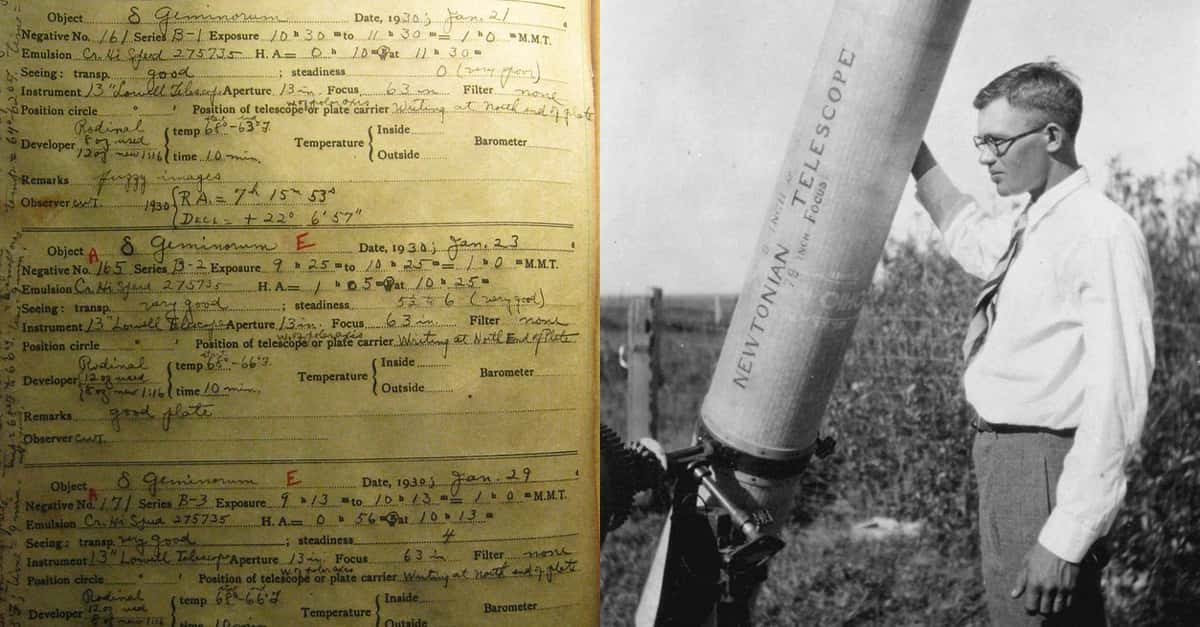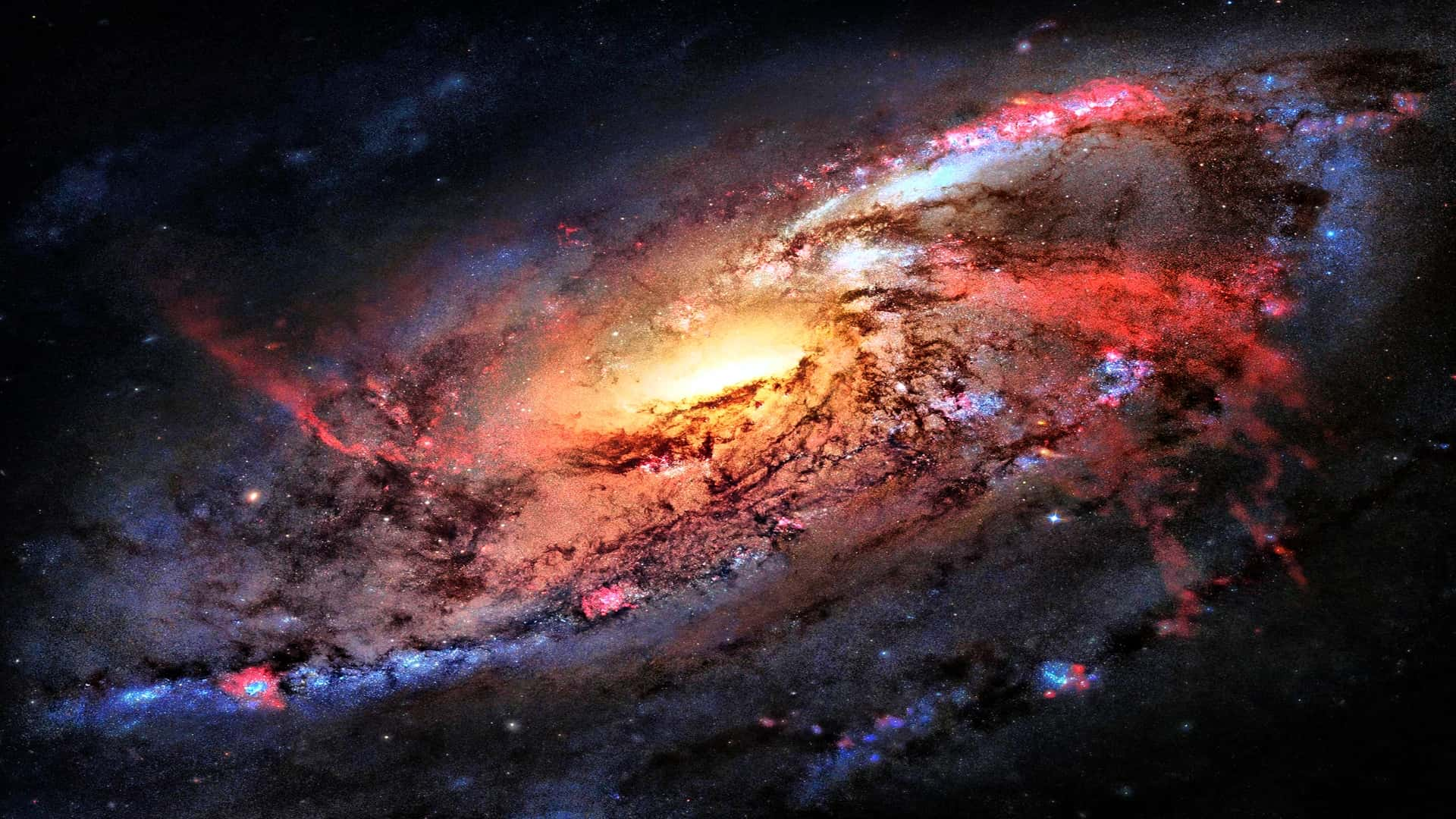Pluto Editorial
Pluto felt closer than ever in July 2015, when NASA’s New Horizons spacecraft flew right past the galactic rock. Like any other denizen of the 21st century, the craft was equipped with a camera, and it did not pass up the opportunity. New Horizons’ images of Pluto and its moon Charon are simply stunning. When it was first discovered, in 1930, Pluto was a speck among thousands of other specks.
These extremely detailed photos show us the lonely rock as we’d never seen it before. A huge chunk of its surface is covered by a vast glacier that’s unmistakably shaped like a heart. It has mountains the size of the Rockies. It's pockmarked by craters that we can now see as clearly as the ones on our moon. The most mysterious object in our solar system finally has a face.
But, to many people’s chagrin, it’s still not a planet. It never was.

Sign up to our newsletter.
History’s most fascinating stories and darkest secrets, delivered to your inbox daily. Making distraction rewarding since 2017.
Planet X
The whole Pluto-Planet conundrum began long before Pluto was even discovered. Back in the 1840s, an astronomer named Urbain Le Verrier noticed that Uranus’s orbit wasn’t acting as expected. He figured that another planet was affecting the orbit—and he was right.
Without ever seeing it, he managed to predict that Neptune was out there in the night sky. Well, not long after, people noticed similar eccentricities in the newly-discovered Neptune’s orbit, and they figured the same thing was happening. There must be another planet out beyond Neptune. This assumption began the search for the legendary Planet X.
 Getty Images
Getty Images
White Whale
Many people from across the world were involved in the search for Planet X, but one of the most devoted was Percival Lowell, a wealthy businessman from Boston. From his Lowell Observatory in Arizona, he began the search for Planet X in earnest in 1906. They searched for a decade, but by the time Lowell suddenly died in 1916, they’d turned up nothing. One friend said that the desperate search for the mysterious planet “virtually killed him.”
After Lowell’s death, a legal battle between the Observatory and his widow ensued, which effectively stopped the search in its tracks. The two sides fought in court for another ten years, but eventually came to an accord. In 1929, the search for Planet X resumed—and this time, they didn't have to wait for years before they found something.
Eureka
At the time, the Observatory was run by a man named Vesto Melvin Slipher (one of the best names in the history of astronomy). He gave the job of finding Planet X to a young, 23-year-old Kansas farmboy named Clyde Tombaugh. Though “planet-finder” sounds like a pretty sweet job for a young man, Tombaugh’s work wasn’t exactly thrilling. He would take two images of the same section of the night’s sky, taken at different times, then rapidly flip back and forth between them to see if anything moved.
He was basically playing the world’s most difficult and mind-numbing game of spot the differences—but on February 18, 1930, he found something. After spending the previous year staring at around two million unique stars, he spotted the difference between a pair of photos. Something was moving, and it was right in the area where the team predicted Planet X ought to be.
After confirming his findings, Tombaugh sauntered into the director’s office and said, “Doctor Slipher, I have found your Planet X.” That right there is Pluto’s whole problem. Confirmation bias. They set out to find a planet, so when they found something, they called it a planet.
But, unfortunately for Tombaugh, Slipher, Lowell, and anyone else who got attached to the idea that Pluto is a planet, saying it doesn’t make it so.
I Swear, It’s A Planet!
In Tombaugh and Slipher’s defense, even if they really wanted Pluto to be the legendary Planet X, they had a decent reason to believe it was. After all, it was just six degrees off from where calculations had predicted Planet X should be in the night’s sky. That couldn’t just be a coincidence, could it? (Spoiler Alert: It could).
From the instant it was discovered, there was reason to doubt Pluto’s planethood. The staff at the Observatory had expected Pluto to have a visible disc; it had none. It was just a dot in the sky like any other. It was also about six times dimmer than had been predicted, which mean Pluto was either much darker than any other large object we’d discovered, or it was much, much smaller than they expected.
At first, astronomers calculated Pluto’s mass based on the assumption that it was affecting Neptune and Uranus’s orbits. This meant that it should be around the same mass as Earth. But, as the years went by, that estimate kept getting smaller and smaller.
Planet X No More
In 1948, new calculations dropped the estimate of Pluto's mass down to about the size of Mars. Then, in 1976, that number went down to around 1% of Earth’s mass. Finally, in 1978, we discovered Pluto’s moon, Charon. It allowed us to calculate Pluto’s mass with precision for the first time, and it ended up being around 0.2% that of Earth. Way too small to affect Neptune the way Planet X supposedly did.
It wasn’t until 1992, when we recalculated Neptune’s mass, that we realized the orbits of it and Uranus weren’t behaving abnormally at all. The entire reason we assumed there was a Planet X went up in smoke—but by that time, we’d been calling Pluto a planet for decades. Stopping wasn’t going to be so easy.
Never Was
In all the excitement of Planet X’s discovery, there were plenty of people who questioned Pluto’s place among the planets. As early as April 1930, the year it was discovered, people noted that Pluto’s small size and strange orbit (it moves around the sun with a far more elliptical trajectory than any of the other planets) made it more like an asteroid or comet than a planet.
Most people, however, just hopped on the planet train and never got off. Why spoil the fun? Well, as the years passed, more and more evidence kept piling up. Starting in the 90s, we started discovering all kinds of Pluto-like objects in its vicinity—an area we now call the Kuiper Belt. The Kuiper Belt is essentially like a second asteroid belt further out in space, and it’s filled with many objects around Pluto’s size.
But still, even after the Kuiper Belt was discovered, Pluto was the biggest object in the region, so that must mean it’s a planet, right? Well, in 2005, we discovered Eris, another Kuiper Belt object that’s more massive than its cousin Pluto. Uh oh...from that moment on, Pluto’s days as a planet were numbered.
Why Isn’t Pluto a Planet?
Eventually, it became pretty obvious that Pluto was getting special treatment. There were lots of objects out there in the Kuiper Belt around its size, but only Pluto was called a planet. So, in 2006, the International Astronomical Union voted to reclassify the ninth planet. From that point on, Pluto was to be known as a dwarf planet instead.
The astronomical community decided that there were three key factors that determined whether or not something is a planet. First, it has to orbit the sun. Pretty straightforward. Second, it has to be massive enough that its gravity forces it into a shape defined by hydrostatic equilibrium. What the heck does that mean? To put it simply, it has to be a sphere.

Pluto passes these first two tests with flying colors. It’s the third one where we run into trouble. A planet must also have cleared the neighborhood around its orbit. That means that a planet is gravitationally dominant. Its gravity should have drawn most of the debris around into itself, so that the only other large objects in its vicinity are its own moons.
Pluto has not cleared the neighborhood around its orbit. There are many other large objects in its vicinity. Every other planet, from Mercury to Jupiter, has fulfilled all three of these criteria. Pluto falls just short. Two out of three ain’t bad—its good enough to get Pluto classified as a dwarf planet—but the planet test requires a perfect score.
I Don’t Care, Pluto IS a Planet!
Now, if you’re still upset about Pluto’s “demotion;” if the above explanation isn’t enough for you, then you should know that you’re not alone. After the reclassification, Alan Stern of NASA’s New Horizons project said, “I’m embarrassed for astronomy.” He refused to acknowledge the IAU’s reclassification, calling it “an awful definition,” and “sloppy science” that “would never pass review.”
Stern even wrote an op-ed for the Washington Post where he tried to convince the IAU to reverse their decision. So, if you still cling to the idea that Pluto is a planet, at least you’ve got Stern in your corner.
However, it doesn’t seem like many in the astronomical community are buying it. Shortly after Stern’s op-ed, Astrophysicist Ethan Siegel wrote a response for Forbes magazine: "The simple fact is that Pluto was misclassified when it was first discovered; it was never on the same footing as the other eight worlds.”
And, knowing the story of Lowell, Tombaugh, and Planet X, it is not hard to see that, in the desperation of a 25-year-long search, we might have been a little hasty with Pluto. It would have been really nice if it were the ninth planet we were all hoping for, but just because we wished it were true, doesn’t make it so.





















